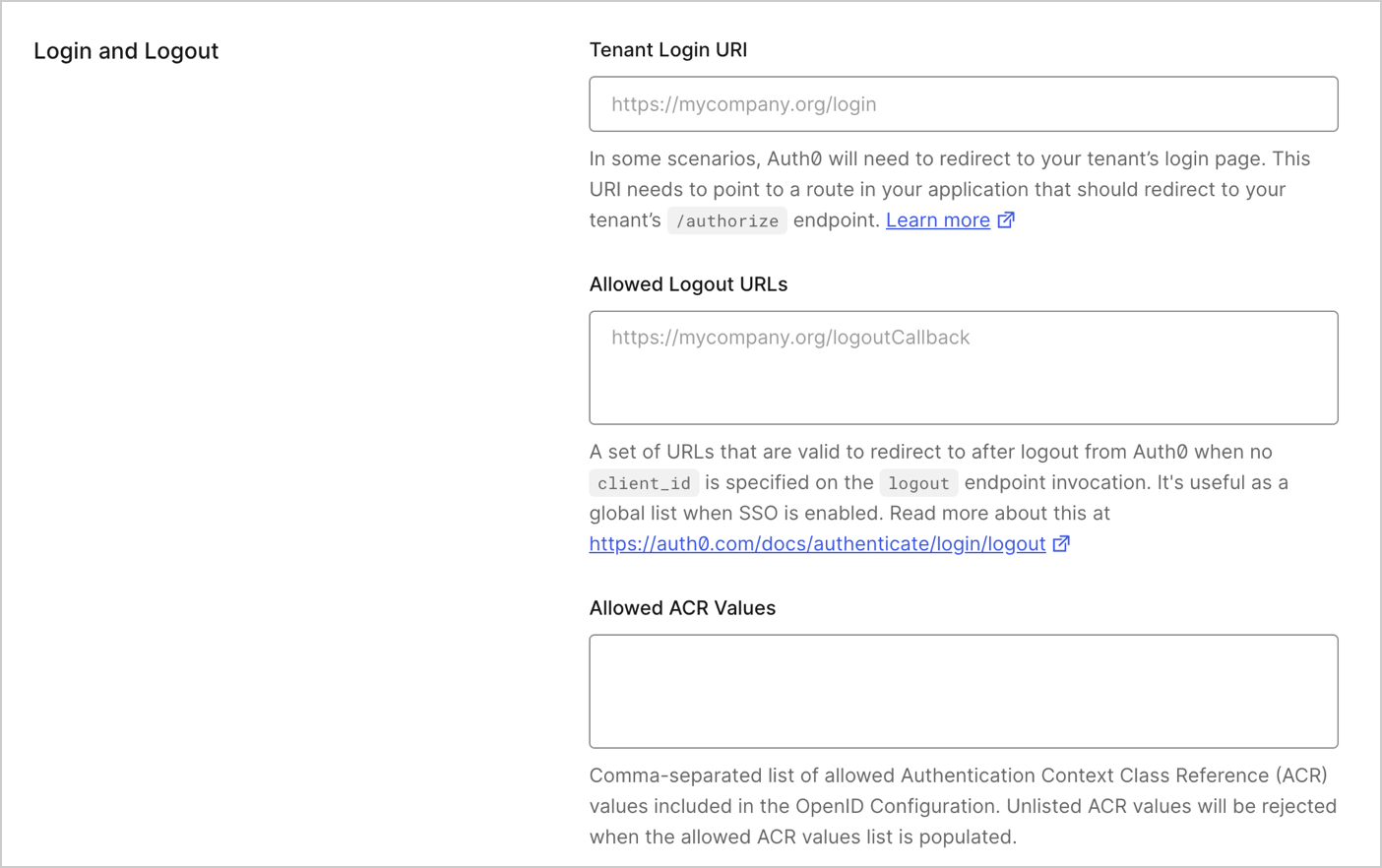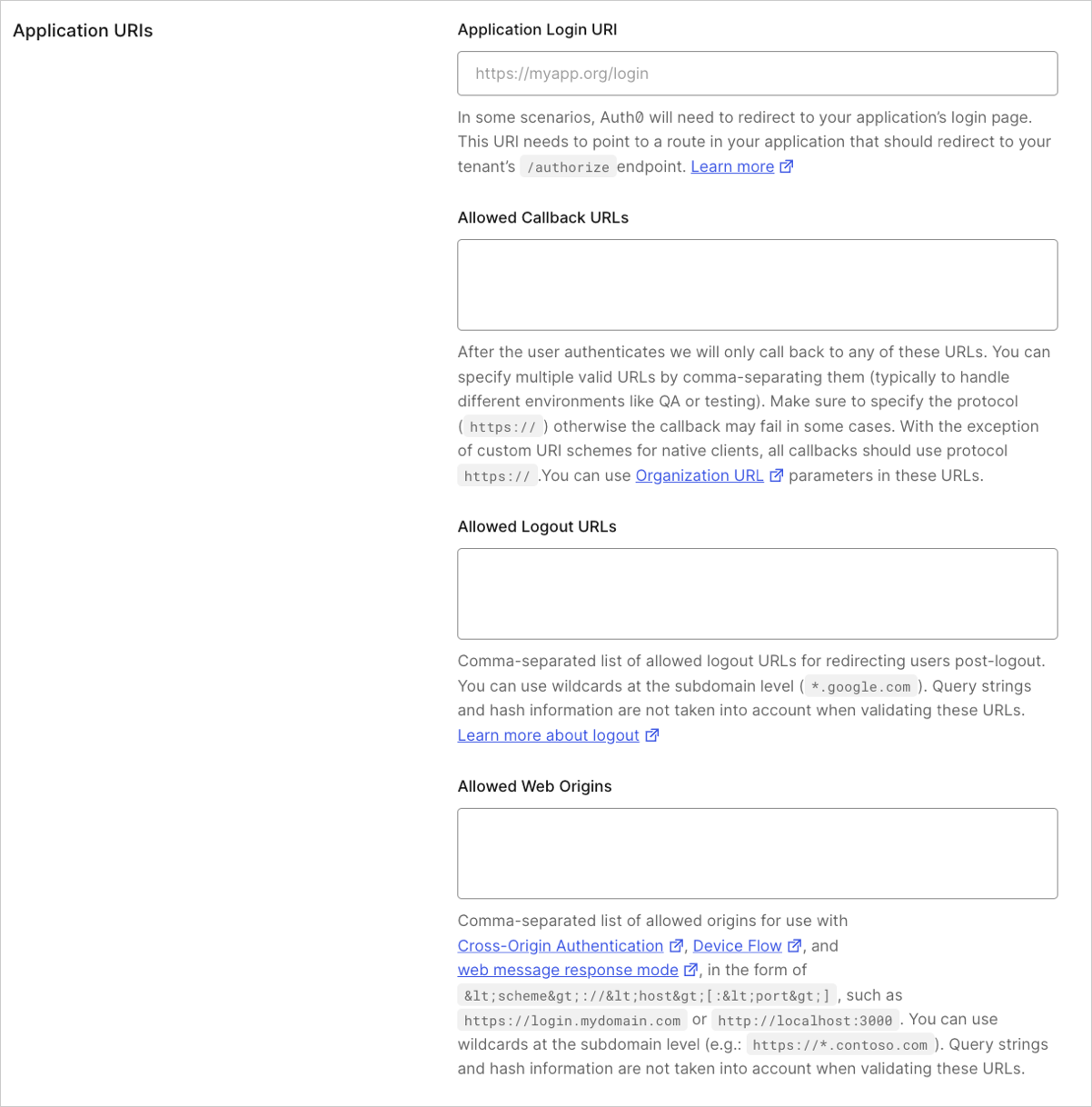-
Add a
returnToquery string parameter with the target URL as the value. Encode the target URL being passed in. For example, to redirect the user tohttps://www.example.comafter logout, make the following request:https://{yourDomain}/v2/logout?returnTo=https%3A%2F%2Fwww.example.com. -
Add the non-encoded
returnToURL (for example,https://www.example.com) as an Allowed Logout URLs in one of two places:-
Tenant Settings: For logout requests that do not include the
client_idparameter, you must add thereturnToURL to the Allowed Logout URLs list in the Advanced tab of your Tenant Settings. To add a list of URLs that the user may be redirected to after logging out at the tenant level, go to the Tenant Settings > Advanced of the Auth0 Dashboard.
-
Auth0 Application Settings: For logout requests that include the
client_idparameter, you must add thereturnToURL to the Allowed Logout URLs list in the Settings tab of the associated Auth0 application(s).
-
Tenant Settings: For logout requests that do not include the
- Specify multiple, valid, comma-separated URLs.
- Use
*as a wildcard for subdomains (such ashttp://*.example.com).
client_id parameter is included and the returnTo URL is not set, the server returns the user to the first Allowed Logout URLs set in the Dashboard.
In order to avoid validation errors, make sure that you include the protocol part of the URL. For example, setting the value to *.example.com will result in a validation error, so you should use http://*.example.com instead.
To redirect using Auth0’s
oidc/logout endpoint, read Use OIDC Endpoint to Log Users Out of Auth0.Federated logouts
Several providers support federated logout. To redirect users from applications using federated logout, initiate federated logout with the following endpoint:https://{yourDomain}/v2/logout?federated
You are responsible for ensuring your application terminates the user session before redirecting.
When the user reaches the /logout endpoint, Auth0 terminates the Auth0 session, redirects the user to the logout endpoint, and terminates the session with the Identity Provider.
Limitations
- The validation of URLs provided as values to the
returnToparameter, the query string, and hash information provided as part of the URL are not taken into account. - The behavior of federated logouts with social providers is inconsistent. Each provider will handle the
returnToparameter differently and for some it will not work. Please check your social provider’s settings to ensure that they will accept thereturnToparameter and how it will behave. - The URLs provided in the Allowed Logout URLs list are case-sensitive, so the URL used for logouts must match the case of the logout URL configured on the dashboard. However, do note that the scheme and host parts are case insensitive. For example, if your URL is
http://www.Example.Com/FooHoo.html, thehttp://www.Example.Comportion is case insensitive, while theFooHoo.htmlportion is case sensitive.
Client ID and Secret for these providers in the Dashboard for the logout to function properly.
Additional requirements for Facebook
Use thereturnTo parameter to specify how to redirect the user after logout.
Not all IdPs support returnTo.
For Facebook, the example code below uses the returnTo parameter and specifies a website for the redirect.

